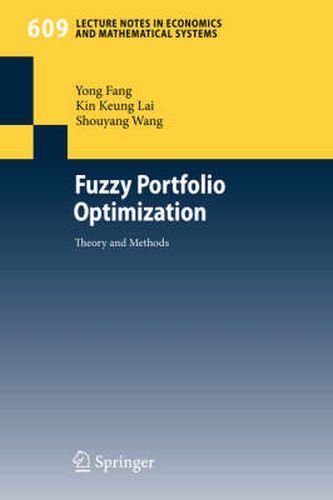Readings Newsletter
Become a Readings Member to make your shopping experience even easier.
Sign in or sign up for free!
You’re not far away from qualifying for FREE standard shipping within Australia
You’ve qualified for FREE standard shipping within Australia
The cart is loading…






This title is printed to order. This book may have been self-published. If so, we cannot guarantee the quality of the content. In the main most books will have gone through the editing process however some may not. We therefore suggest that you be aware of this before ordering this book. If in doubt check either the author or publisher’s details as we are unable to accept any returns unless they are faulty. Please contact us if you have any questions.
Most of the existing portfolio selection models are based on the probability theory. Though they often deal with the uncertainty via probabilistic - proaches, we have to mention that the probabilistic approaches only partly capture the reality. Some other techniques have also been applied to handle the uncertainty of the ?nancial markets, for instance, the fuzzy set theory [Zadeh (1965)]. In reality, many events with fuzziness are characterized by probabilistic approaches, although they are not random events. The fuzzy set theory has been widely used to solve many practical problems, including ?nancial risk management. By using fuzzy mathematical approaches, quan- tative analysis, qualitative analysis, the experts’ knowledge and the investors’ subjective opinions can be better integrated into a portfolio selection model. The contents of this book mainly comprise of the authors’ research results for fuzzy portfolio selection problems in recent years. In addition, in the book, the authors will also introduce some other important progress in the ?eld of fuzzy portfolio optimization. Some fundamental issues and problems of po- folioselectionhavebeenstudiedsystematicallyandextensivelybytheauthors to apply fuzzy systems theory and optimization methods. A new framework for investment analysis is presented in this book. A series of portfolio sel- tion models are given and some of them might be more e?cient for practical applications. Some application examples are given to illustrate these models by using real data from the Chinese securities markets.
$9.00 standard shipping within Australia
FREE standard shipping within Australia for orders over $100.00
Express & International shipping calculated at checkout
This title is printed to order. This book may have been self-published. If so, we cannot guarantee the quality of the content. In the main most books will have gone through the editing process however some may not. We therefore suggest that you be aware of this before ordering this book. If in doubt check either the author or publisher’s details as we are unable to accept any returns unless they are faulty. Please contact us if you have any questions.
Most of the existing portfolio selection models are based on the probability theory. Though they often deal with the uncertainty via probabilistic - proaches, we have to mention that the probabilistic approaches only partly capture the reality. Some other techniques have also been applied to handle the uncertainty of the ?nancial markets, for instance, the fuzzy set theory [Zadeh (1965)]. In reality, many events with fuzziness are characterized by probabilistic approaches, although they are not random events. The fuzzy set theory has been widely used to solve many practical problems, including ?nancial risk management. By using fuzzy mathematical approaches, quan- tative analysis, qualitative analysis, the experts’ knowledge and the investors’ subjective opinions can be better integrated into a portfolio selection model. The contents of this book mainly comprise of the authors’ research results for fuzzy portfolio selection problems in recent years. In addition, in the book, the authors will also introduce some other important progress in the ?eld of fuzzy portfolio optimization. Some fundamental issues and problems of po- folioselectionhavebeenstudiedsystematicallyandextensivelybytheauthors to apply fuzzy systems theory and optimization methods. A new framework for investment analysis is presented in this book. A series of portfolio sel- tion models are given and some of them might be more e?cient for practical applications. Some application examples are given to illustrate these models by using real data from the Chinese securities markets.